 Search
Search
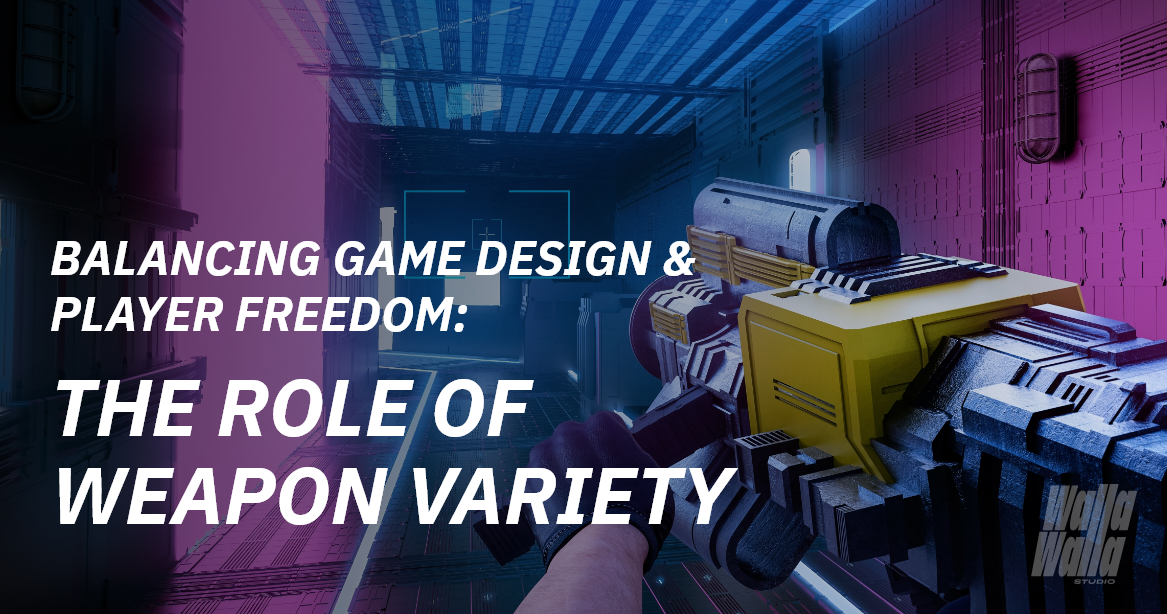
Now many players search for games offering a high weapon variety making game developers strive to find a firepower balance.
Weapons can range from the classic sword and shield to futuristic energy guns, and even magical spells. But how should game developers select which and how many weapons to include in a game, and what are the considerations to take into account?
- How to create a genuinely entertaining and emotionally impactful game with weapons while still developing the elements of strategy and realism?
- Which is more profitable for a game developer: to make the players outsmart the sticky in-game situations or offer a weapon that can cope with most problems the game character faces?
- And should a game developer indulge all the desires of future players?
In this article, Walla Walla Studio answers these questions and shares insights on the behind-the-scenes process of weapon selection.
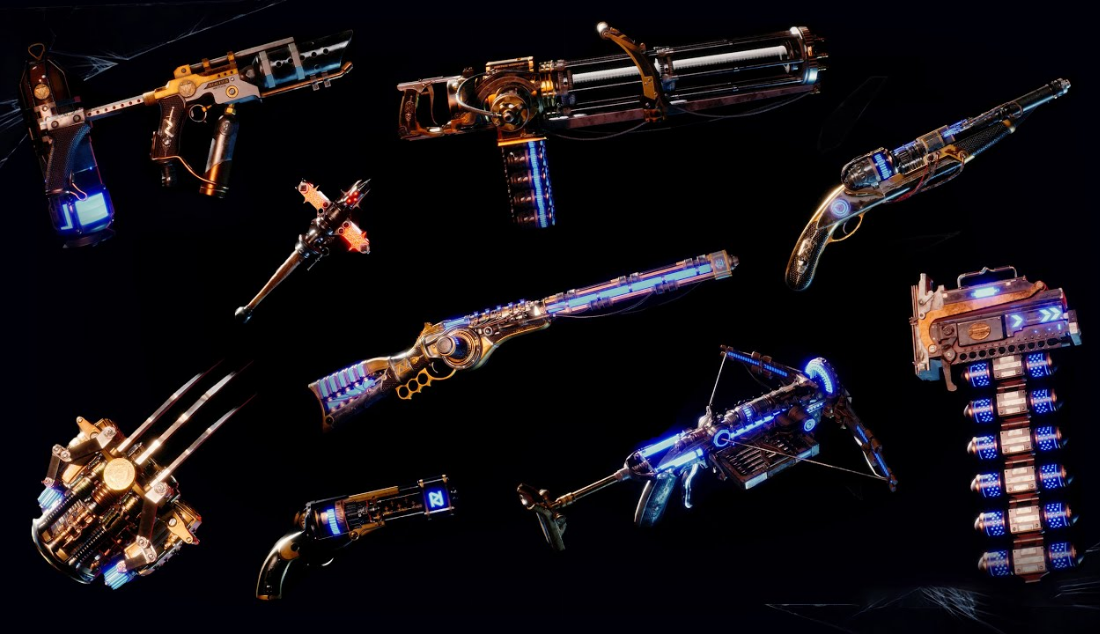
Photo credit: TheGamicissist, Focus Entertainment
Why limited weapons variety idea is so common?
The key points that game developers take into account when offering players not too many weapons can be simply formulated.
1. Game Balance
Games need to be balanced to provide a fair and engaging experience for players. Having too many weapons or weapon types can make it difficult to balance the game’s combat mechanics. By limiting the number of weapons, you can better balance the game’s combat mechanics and ensure that no single weapon or weapon type is overpowered.
2. Accessibility
Some players may find it overwhelming to have too many weapons to choose from. Limiting the number of weapons can make the game more accessible and easier to understand for players who may not be as experienced with the game’s combat mechanics.
3. Realism
In some cases, limited weapon variety may be more realistic, especially in games that aim to portray a particular time period or setting. For example, a game set in medieval times may have a limited selection of weapons available to the player, as that would be more historically accurate.
4. Development Time
Designing and implementing a wide variety of weapons can be time-consuming and costly for some game developers. By limiting the number of weapons, you can focus your efforts on making each weapon unique and well-balanced, rather than spreading yourself too thin trying to create a vast array of weapons.
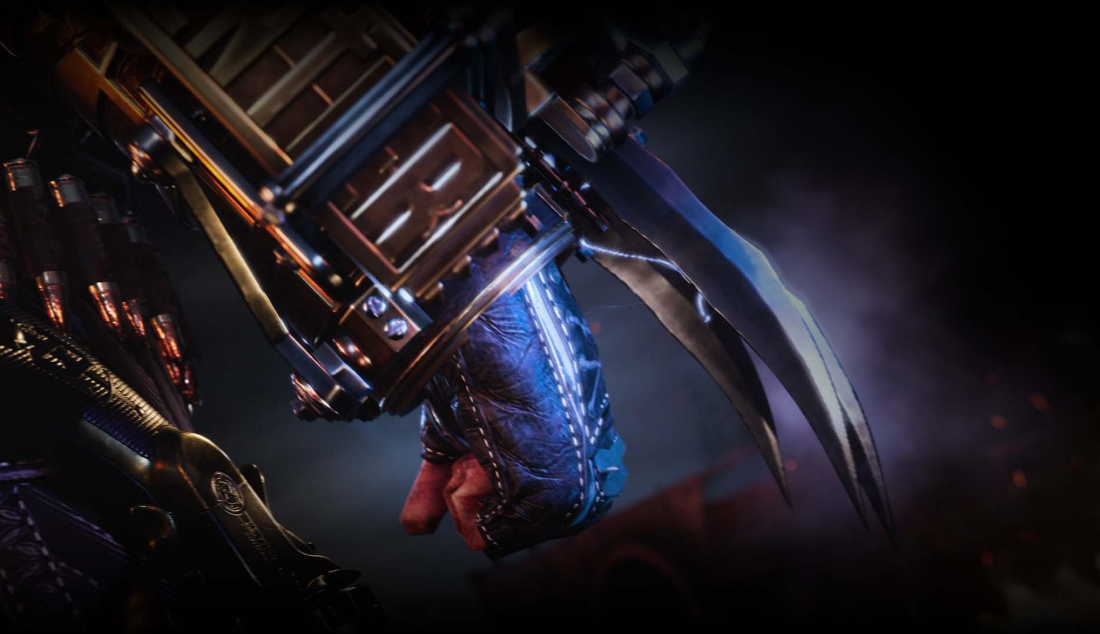
photo credit: Focus Entertainment
Are weapons the only way of a player’s interaction with your game?
Speaking of the shooter and combat games, weapons bring a lot of fun to players using them to effect and damage the elements of the environment (to fire and see what happens with the parts of the game world and what visual sort of damage it may cause). The reason is only this way a player sees that he/she can actually affect the game environment, and modify or change it.
Making weapons the only way of interaction is a key problem. That leads to a consistent lack of player influence on the game processes and environment. And – to a need to design more and more weapon types to keep that immersive game experience.
Instead, you can increase the playability cycle of your game by offering players more options for characters’ moves or using in-game gadgets. That will give additional interactions which will push players to be smarter and more strategic, not reacting with weapons on each type of game challenge. Besides environmental interactions, you may add to the game:
- dialogue and conversational interactions (for example, with non-player characters who provide players with important information);
- side quests & missions (optional, adding depth to the game’s lore and narrative).
Is an in-game weapon customization a “win-win” solution?
More and more games are turning to the idea of allowing players to customize their weapons along with using standard arming. This way you can avoid giving the player a large choice at once and increase the replayability of the game and the players’ engagement. So, the positive effects of weapon customization are:
- Customizing their weapons, players create unique and personalized load-outs that reflect their playstyle and preferences. This gives a sense of ownership and investment in the game that keeps players coming back for more.
- In-game weapon customization can increase replayability by providing players with new goals to strive for.
For example, players may want to unlock specific weapon attachments or upgrades that are only available through customization. This can encourage players to keep playing the game to unlock new customization options.
- In-game weapon customization can be a source of monetization for game developers. Players may be willing to pay for cosmetic upgrades or customizations for their weapons, providing an additional revenue stream for developers.
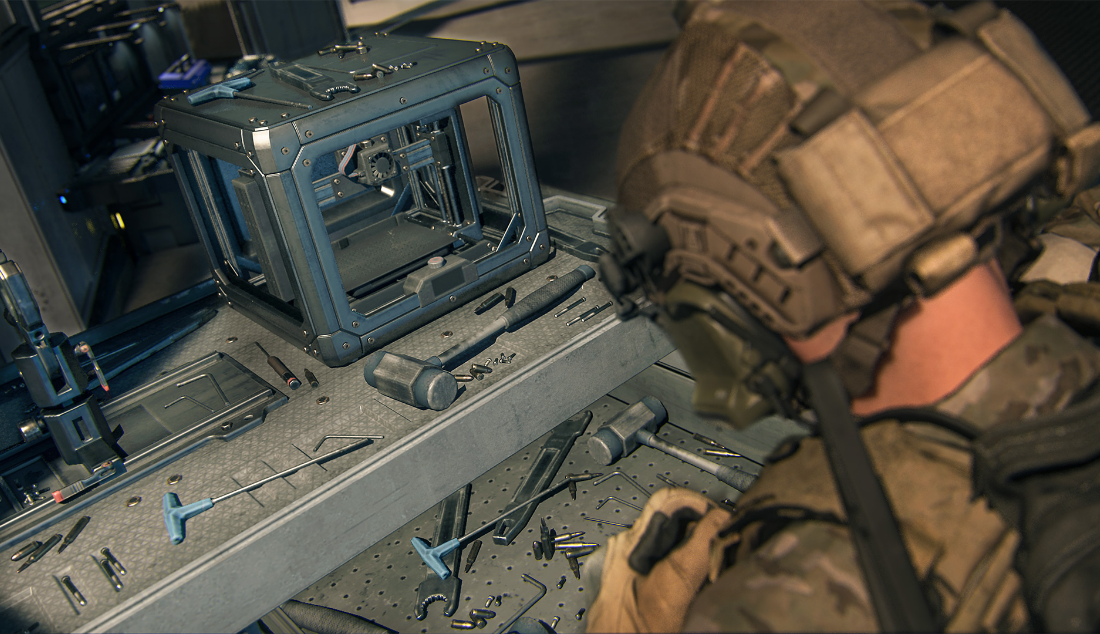
photo credit: Call of Duty®: Warzone™ 2.0
Just like it’s implemented for Call of Duty: Warzone 2 DMZ, where each of the 5 possible attachments to the weapons costs $3,000. And a fully upgraded gun will cost you $15,000.
- In-game weapon customization can increase player satisfaction by providing a sense of control over their gameplay experience. When players can customize their weapons, they can create load-outs that feel unique and personal to them, which can enhance their enjoyment of the game.
However, poorly implemented customization features can have a negative impact on player motivation. Here are some reasons why:
- if the customization system is overly complex, it may discourage players from using it;
- if players perceive that monetized customization options provide a significant advantage over non-paying players, it can create a pay-to-win perception that demotivates players who do not want to spend money on the game;
- if there are only a few customization options available, players may become bored with the game quickly;
- if the customization system is tied to a progression system that is too slow or difficult to progress through, players may become frustrated and lose motivation to continue playing the game;
- if the customization options are not well-balanced with the rest of the game’s mechanics, it can create an unbalanced gameplay experience that can demotivate players;
for example, if a certain customization option makes a weapon significantly more powerful than other options, players who do not have access to that option may feel like the game is unfair.
Overall, in-game weapon customization has a positive impact and is not likely to demotivate players if it is implemented well and balanced with the rest of the game’s mechanics.
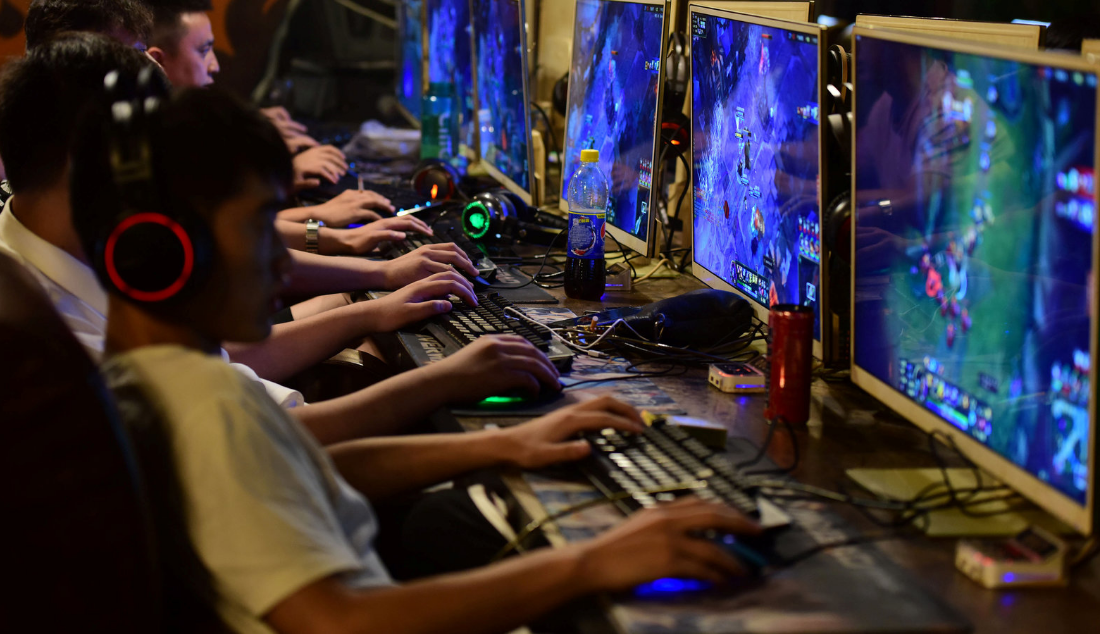
photo credit: New York Times
Does the quantity of weapons affect the game’s profitability?
Shortly: it depends. For some games, the challenge of outsmarting sticky situations is a core part of the gameplay experience. These games often prioritize player skill and strategy over raw firepower, so may not offer a wide range of weapons or equipment to use.
In these cases, adding different character abilities can be more profitable for the game developer, as it can create a more engaging and satisfying gameplay experience for the target audience.
On the other hand, some games prioritize giving players a sense of empowerment through powerful weapons and equipment. These games may offer a wide range of weapons and equipment that can cope with most problems the game character faces.
In these cases, offering a powerful weapon or equipment can be more profitable for the game developer, as it can appeal to players who want to feel powerful and dominate the game world.
Ultimately, the decision of whether to prioritize a strategic player’s approach or offer a variety of powerful weapons should be based on the target audience and the design goals of the game. Both approaches can be successful if executed well, and game developers should consider which approach is most likely to resonate with their target audience.
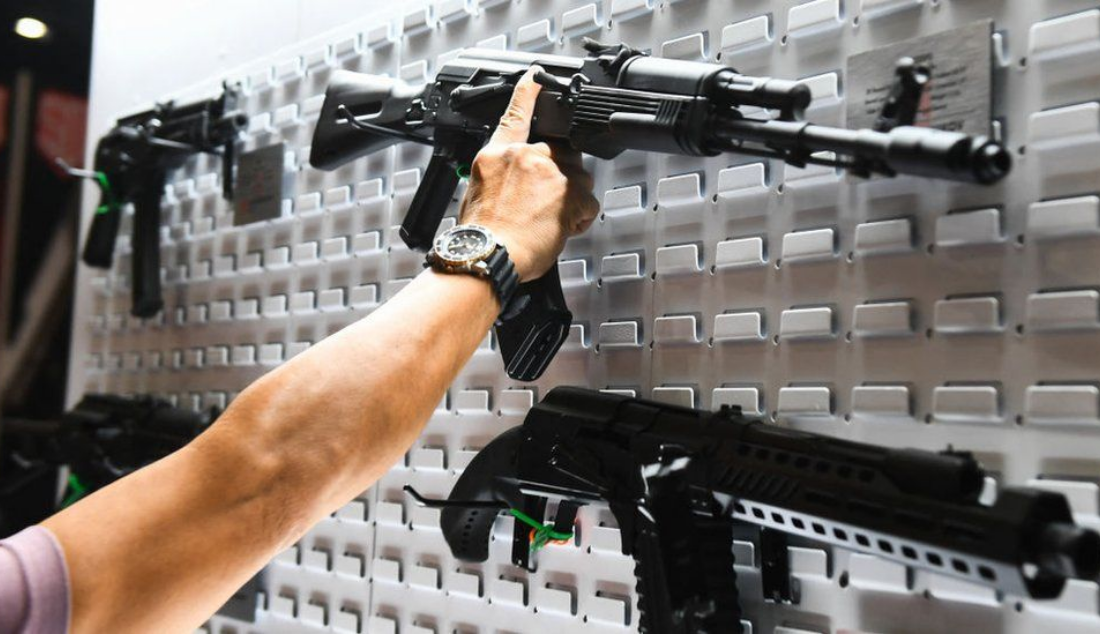
photo credit: BBC
Does game weapon variety intersect with real-world gun control?
Games that are set in modern or realistic settings and feature real-world firearms may have a stronger connection to real-world gun control issues.
For example, a game that allows players to purchase and use realistic firearms may face criticism for potentially promoting gun culture or violence. This can lead to debates about the role of video games in shaping public attitudes toward guns and gun control.
Even though the research studies found no significant relationship between exposure to violent video games and aggressive behavior, and concluded that the evidence did not support the claim that violent video games cause real-world violence, video games can always become easy targets for social and political rhetoric.
On the other hand, games that are set in fantasy or sci-fi settings may have less of a connection to real-world gun control issues, as the weapons used in these games may not have real-world equivalents. However, even in these cases, game developers may face criticism if their games feature highly realistic depictions of violence or excessive use of firearms.
Summing up
Overall, as a game developer, you should be mindful of player feedback and preferences, but you should also consider other factors when making weapon design decisions, such as game balancing, development time, realism, and following the main goal of the game.
You always have the helping hand of Walla Walla Studio’s game art production professionals who are ready to help you with any game weapon development issue: from creating an idea of a weapon concept to its 3D production and customization according to your gameplay.
Remember, the gaming world has a great responsibility to show people that any use of weapons has consequences, and not all in-game problems are solved most effectively with weapons. So, try to add to the game as many instruments as possible for players to have also the decision options without involving weapons.


